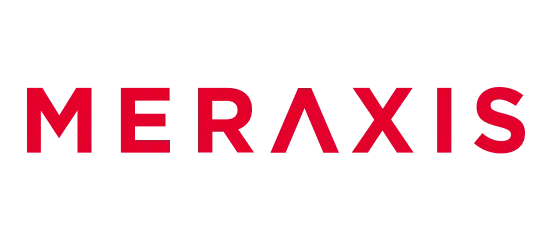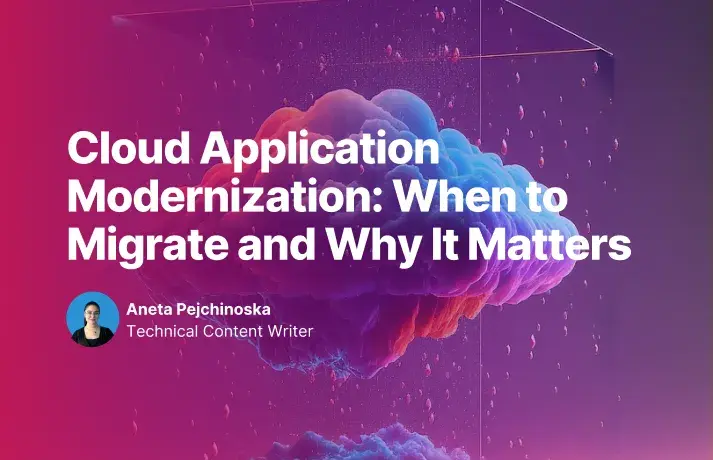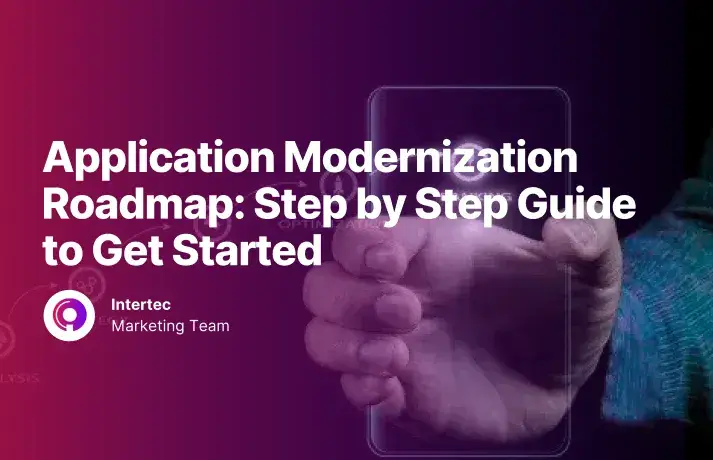What Is Application Migration?
Application migration refers to the process of moving an entire application from one environment to another. For example, from on-premises data centers to a cloud platform like AWS, Microsoft Azure, or Google Cloud. It’s often the first step toward cloud adoption, especially for organizations consolidating data centers or pursuing cost optimization.
Migration can involve migrating applications along with their data, configurations, and dependencies while ensuring minimal disruption to daily operations and maintaining application security and data management.
Updating Existing Systems
Migration isn’t just about moving - it’s also about improving. Many legacy apps require system reengineering to perform efficiently in a cloud infrastructure. By optimizing outdated software during migration projects, businesses can achieve improved performance, better scalability, and enhanced security.
A migration initiative also helps organizations respond quickly to market changes, integrate modern systems, and extend the lifespan of existing investments.
Key Goals
The main goals of application migration include:
- Improved performance through modern infrastructure and cloud solutions.
- Scalability to handle growing workloads efficiently.
- Resilience and disaster recovery in distributed cloud environments.
- Cost efficiency and cost savings by retiring outdated hardware.
- Innovation enablement through faster software development and release cycles.
A well-executed migration doesn’t just move apps - it moves the business forward.
Methods
Different modernization methods and migration strategies serve distinct purposes. While the 7Rs framework provides guidance, five primary approaches dominate cloud migration projects:
- Rehosting (Lift-and-Shift) – Moving applications to the cloud as-is with minimal code changes.
- Replatforming – Making slight modifications to leverage managed services like AWS RDS or Azure App Services.
- Refactoring – Restructuring the codebase for performance and maintainability within a cloud environment.
- Rearchitecting – Redesigning applications using cloud-native solutions and microservices architectures.
- Rebuilding – Rewriting applications from scratch to align with new business goals and modernization strategies.
Each step involves trade-offs between complexity, significant resources, and innovation potential.
Outcomes
Successful application migration provides tangible business value:
- Access to modern systems and AI/ML-ready environments.
- Support for containerization, virtual machines, and microservices.
- Greater operational efficiency and agility in delivering features.
- Optimized infrastructure costs through pay-as-you-go cloud providers.
What Is Application Modernization?
If migration is about moving, application modernization is about evolving. It focuses on modernizing apps and existing applications to align with today’s cloud computing capabilities, modern architectures, and business strategies.
Modernization allows organizations to transition from rigid monolithic applications to modular, flexible, and cloud-native ecosystems - unlocking innovation at scale.
Want to know all about the basics? We've got them covered in our 'What Is Application Modernization and Why It Matters in 2025' article.
Transferring Applications
Cloud modernization often overlaps with cloud migration, involving the transfer of apps between environments - such as from on-premises to hybrid cloud or multi-cloud infrastructures. But it’s more than relocation; it’s a modernization process that enhances capabilities, strengthens application security, and reduces technical debt.
Types of Environments
Common modernization journeys include:
- Physical-to-physical: Relocating data centers or servers.
- Physical-to-cloud: Moving from on-premises to AWS, Azure, or GCP.
- Cloud-to-cloud: Adopting multi-cloud or switching between cloud providers.
- Hybrid cloud: Combining public and private infrastructure for flexibility.
Each requires robust data migration and data management practices to ensure compliance, accuracy, and continuity.
Modernization vs. Migration
It’s important to distinguish migration and modernization:
- Migration is the act of moving an application to a new platform.
- Modernization enhances the application to meet modern business needs and technical standards.
Example:
A “lift-and-shift” to Microsoft Azure is a migration. Redesigning that same app into cloud-native architectures using microservices is modernization.
Both are essential steps toward digital transformation, but modernization drives improved security, agility, and long-term sustainability.
How Migration and Modernization Intersect
In many enterprises, migration and modernization occur simultaneously. Moving workloads to cloud environments often exposes legacy system inefficiencies - like slow integrations, outdated dependencies, or high maintenance costs.
To fully benefit from cloud services, modernization becomes critical. It unlocks autoscaling, serverless computing, and cost-effective scalability that traditional architectures simply can’t provide.
When They Occur Independently
Sometimes, organizations choose one path first:
- Modernization without migration: Updating architecture or refactoring code in the current environment without changing infrastructure.
- Migration without modernization: Moving to a new cloud infrastructure using a lift-and-shift approach while postponing modernization.
Both are valid depending on budget, timeline, and business value priorities.
Decision Framework: Migrate, Modernize, or Both?
Project managers and technology leaders can evaluate the right path by considering:
- Business Value: Which apps deliver the greatest ROI?
- Performance Bottlenecks: Where do inefficiencies hinder innovation?
- Compliance Risks: Are outdated systems creating vulnerabilities?
- Budget & Resources: What can be modernized now versus later?
- Future Readiness: Will your modernization journey support long-term innovation?
Application Migration vs. Modernization: Key Differences and Similarities
Factor | Migration | Modernization |
Purpose | Change of environment | Functional and performance enhancement |
Typical Drivers | Cost, scalability, infrastructure changes | Technical debt, agility, innovation |
Risks | Downtime, compatibility issues | Scope creep, business disruption |
Tech Focus | Infrastructure, cloud providers | Codebase, DevOps, modernization processes |
Outcome | Platform portability, disaster recovery | Future-proof, cloud-native solutions |
Both deliver agility and competitiveness - migration enables portability, while modernization ensures improved performance and long-term sustainability.
Key Considerations for Success
1. Set Clear Goals and Priorities
Before initiating any modernization project, conduct a detailed application portfolio assessment. Identify which apps to migrate, modernize, or retire. Balancing speed, cost, and depth of modernization ensures alignment with business strategies.
A phased modernization journey helps organizations modernize at their own pace while protecting existing investments.
2. Manage Data Migration Challenges
Data is the foundation of every application, and data migration is often the most complex task in migration projects.
- Complexity: Legacy data structures rarely map neatly to cloud databases.
- Volume: Large datasets may slow cloud migration.
- Real-time updates: Continuous changes require advanced synchronization.
Using managed services that handle ETL pipelines, encryption, and compliance (GDPR, HIPAA) mitigates risk and ensures improved security during migration.
3. Address Skill Gaps and Change Management
Successful modernization requires aligning stakeholders across IT, business, and operations. Upskilling teams in cloud technologies and modernization services is key to overcoming resistance.
A collaborative culture built around DevOps and continuous improvement drives modernization projects faster and reduces friction.
4. Leverage Automation, AI, and Cloud Tools
Automation is the backbone of modern application development.
- AWS Migration Hub simplifies workload tracking.
- Azure Migrate automates assessments.
- Google Duet AI accelerates code refactoring and optimization.
By combining cloud provider automation tools with AI-driven analytics, organizations can significantly reduce human error, save costs, and improve project accuracy.
5. Measure Success with Metrics That Matter
Post-migration, evaluate success using metrics such as:
- Application performance and latency.
- Deployment frequency and downtime reduction.
- Infrastructure cost optimization.
- End-user satisfaction and reliability.
- Innovation velocity and new-feature delivery.
Tracking these KPIs ensures modernization efforts remain tied to business outcomes and continuous improvement.
Conclusion: Making the Right Move for Your Applications
In today’s cloud-first and digital transformation era, application migration and modernization are not just technical decisions - they’re strategic imperatives.
Migration helps you move to a modern system; modernization ensures your applications thrive there. Together, they enable operational efficiency, cost savings, and long-term agility.
Before launching your next modernization project, start with a readiness assessment. Understand your current architecture, define your business objectives, and choose the right modernization strategy that aligns with your organization’s future.
Because at its core, modernization isn’t about technology - it’s about transformation. And every modernization journey you begin today sets the foundation for a smarter, faster, and more resilient business tomorrow.
Ready to accelerate your modernization process?
Schedule a free audit by filling out the form below and find out where migration and modernization can deliver the biggest ROI for your organization.







